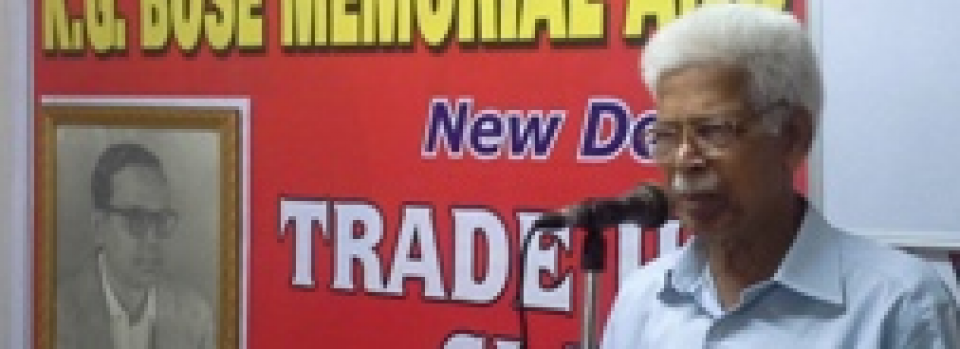A BRIEF HISTORY OF COMMUNICATIONS
THE EPIC STRIKE OF JULY 1946 BY P AND T EMLOYEES – 1
A BRIEF HISTORY OF COMMUNICATIONS
The 23 days strike of the Posts and Telegraph Employees which started from 11th July 1946 is an historic and inspiring chapter of the great Independence Struggle. The strike ended with achievement of all the 12 demands raised by the unions. It also shows the full justification of the demands. Public fully supported. As in the case of the Royal Indian Navy Mutiny, The strike of the P and T Workers also inspired and encouraged the freedom movement.
Before going in to the details of the strike, it will be pertinent to have a brief look in to the then communications services and the trade union organizations.
Growth of Communication Services
The history of Communications starts along with the history of mankind. In the early ages, they communicated each other with body movements, sounds, symbols, hints, pictures, drawings etc. These have been recorded by the various historians, who deeply investigated in the matter.
Alphabets, sentences, writings etc. were already in vogue in BC 3000 and used by Sumerians, Semitics, Egyptians and Chinese etc. The invention of paper, printing press etc. helped communication services in a big way.
The rulers in India used doves for conveying urgent messages to distant parts of their kingdom. Chinese used bamboo and wood pieces. Messages were also sent through horse men to various parts of the country. It is well known that Marathon is being organized in memory of the epic non-stopping run of soldier Philipedas to inform Caesar about the victory in the war.
Not only for sending messages and news, but also for the growth of civilization and progress, Communications have been of great help. Letters / Messages were sent initially by the rulers only. Religious institutions and merchants followed suit for their own requirements.
Postal Services in India
Postal Services were started in Britain in 1516. Although initially it was only for the use of the royalty, it was extended to the people in 1635.Postal Coaches, pulled by horses and transporting letters, parcels etc were introduced in 1784. When the trains were introduced, postal articles were sent through them also. It was on 15th September 1830 that the first postal bag with articles through train were sent from Liverpool to Manchester. Universal Postal Union connecting postal services between various countries was introduced in 1874.
Although limited postal services existed during the period of Mughals and earlier sultans, kings etc., it was in 1766, during the British regime that the modern postal services were introduced in India, under the initiative of Robert Clive, then Governor General. The services were run under the direct control of the top British officers, and that too for the East India Company only. Only District Collectors were authorized to open the postal bags.
The General Post Office in Calcutta was started in 1774; in Madras in 1789 and in Bombay in1794. Gradually services started in the kingdoms of Travancore, Mysore, Junagadh, Indore, Bhopal, Cochin etc. It was called Anchal Service in Travancore and Cochin. There were some private services also.
Through a Post Office Act in 1854, all the postal services run by private organizations were closed. Postal services became the monopoly of the East India Company. The postal rates were unified. A grand system with 300 Head Quarter Offices and 451 Sub-ordinate Offices was introduced in October 1854. Postal Stamps were also introduced. The charges were calculated on the basis of distance in the early days.
Telegraph Services started in India in 1850s along with Railways. The first Telegraph line between Calcutta and Lucknow was inaugurated in November 1850.
The British fully utilized the Posts and Telegraph Services to control their biggest colony, India. It is worth mentioning that the historians have recorded that the telegraph services were fully used for conveying information and locating the enemy forces etc. during the first Independence Struggle, which the British called as “1857 Sepoy Mutiny “.
V.A.N.Namboodiri
